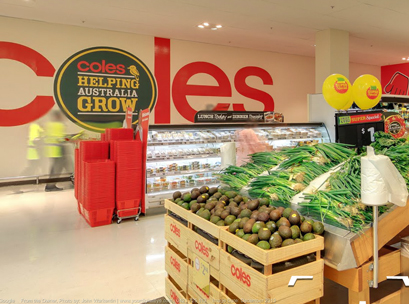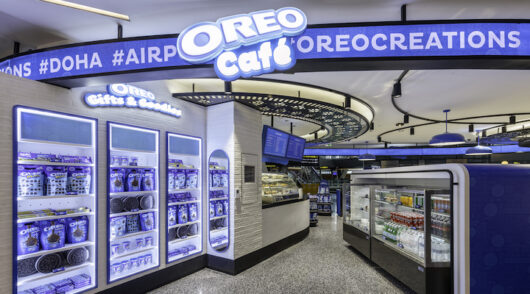 Coles has no intention of meekly surrendering the gains it has made in the past decade to a renewed Woolworths, expanding Aldi and Costco store networks or the prospect of other new market entrants, including Amazon and Lidl.
Coles has no intention of meekly surrendering the gains it has made in the past decade to a renewed Woolworths, expanding Aldi and Costco store networks or the prospect of other new market entrants, including Amazon and Lidl.
In a briefing on business strategies by Wesfarmers retail chains, the Coles food and liquor businesses outlined a comprehensive plan built around store development, product range enhancement, investment in new channels and services and a relentless focus on keeping prices down.
Coles managing director John Durkan and merchandise director Chris Nicholas said Coles is on a journey to simplify its ranges, identifying major category resets, more product innovation and the removal of poorly performing products as the three keys to a customer-led range simplification.
The executives said reduced range does not mean less choice for customers with stores on average stocking 16,000 product lines.
Noting that one in five Coles customers were dissatisfied with range and product availability, the retailer pointed out that range rationalisation can lead to strong sales increases within categories and that simplified ranges free up space for product innovation.
Improving sales growth within categories is crucial as an offset for Coles’ focus on reducing prices, in a market where household budgets are under pressure and one third of customers are dissatisfied with prices.
Durkan and Nicholas told analysts at the briefing that Coles food and liquor prices had remained below the Australian Bureau of Statistics food price inflation index since the 2010 financial year and the retailer is continuing to invest in its customer offer.
Coles currently has more than 4100 products on its ‘everyday value’ program and, excluding tobacco and fresh foods, has trimmed grocery and liquor prices by 2.2 per cent in the current financial year.
Coles believes fresh food offers significant opportunities for growth with high single digit sales growth and a focus on investment with suppliers to improve quality, which is currently an area of dissatisfaction with one in six customers.
As part of the focus of fresh foods, fresh bread will be rolled out into all stores.
Nicholas believes the Coles brand is also an important opportunity for sales growth and a key differentiator for the retailer in the competitive grocery market.
Nicholas said the Coles brand products offer “outstanding value and quality” and a platform for innovation while also lowering the cost of a customer’s basket of goods, as penetration of the brand increases across categories.
Product sales performance is critical to Coles sales and earnings growth and Nicholas says Coles brand product penetration in stores will be customer-driven with products that don’t meet sales expectations being deleted.
Coles’ store development program aims to improve the customer experience and up to 49 refurbishments will be completed in the current financial year with up to 30 more expected to be upgraded in the 2018 financial year.
Coles will open 21 new stores in FY2018 and close 12, maintaining a net floorspace gain of between 1.5 per cent and two per cent a year and plans to implement a ‘simplicity upgrade’ of the entire store network over the next three years.
The simplicity upgrade is built around smarter systems to streamline the flow of stock , improve direct global sourcing and focus on end to end planning from suppliers through to shelf.
Durkan is confident that the five-year turnaround strategy for the liquor business is on track with encouraging growth in sales and volumes.
The retailer has invested in 125 Liquorland renewals this financial year and Durkan expects improved trading performance from investment in value, range simplification, exclusive brand penetration and the Liquor Direct channel.
The supermarket giant plans to further develop new channels and services with customer led, data driven and digitally enabled platforms.
Coles is keen on tailor made customer offers and aims to improve the customer experience of its website and digital app and wants to integrate the digital services into the in-store experience.
Digital tools are also expected to improve Coles store processes, improving in-store efficiencies and re-engineering processes to enable rapid innovation, leaner store operations and a reduced cost of doing business.
Coles Online sales growth in the current financial year is 16 per cent and there has been a four per cent increase in the number of active Flybuys loyalty program households.
Durkan told attendees at the strategy briefing market conditions in food and liquor will continue to be highly competitive, demanding continuing investment in value, fresh food quality, innovation and market leading service.
Durkan noted the decisions to accelerate investment in the Coles food and liquor businesses are the right decisions for the long term.
Coles food and liquor businesses, including the convenience store network, have 2,447 supermarkets and stores serving more than 20 million customers each week.
Guy Russo, CEO for department stores, outlined to the attendees at the strategy briefing that the Target turnaround was a minimum four year project with the immediate focus in the 2017, 2018 and 2019 financial years on fixing the problems within the struggling discount department store chain.
Russo said he expects to “reset” the chain in the 2019 and 2020 financial years with a view to building sustainable growth from FY2021 onwards.
The overhaul of the struggling Target chain will include an unspecified number of store closures and conversions of some locations to the Kmart brand.
Russo told analysts the retailer will be talking to landlords about its plans to reduce the number of outlets and possibly some store floorspace.
The restructure of the store network will include both larger and smaller stores and could see some of the Country Target shut and the Urban Target smaller footprint store format abandoned.
 Russo flagged that the heavy losses incurred by Target may be behind it as issues within the business are addressed but it would take time to achieve sustainable sales and earnings growth.
Russo flagged that the heavy losses incurred by Target may be behind it as issues within the business are addressed but it would take time to achieve sustainable sales and earnings growth.
Russo said he expects Target will be able to grow sales over the next five years despite the reduced floorspace resulting from store closures or conversions to the Kmart brand.
Target currently has 185 large stores and 119 small stores while Kmart has 217 discount department stores.
Russo took over responsibility for the revival of the Target chain in March 2016 after his success in rebuilding Kmart and a key challenge for the Target fix is to ensure that sales for Kmart are not cannibalised.
Mindful of the need for differentiation of the two discount department store chains, Russo’s Target turnaround is heavily based on rebuilding the chain’s reputation for fashionability and quality, especially in the womenswear, childrenswear and home categories.
Russo told analysts Target management will increase direct sourcing and improve range architecture while reducing the total number of items stocked.
Russo said Target will transition to an everyday low prices offer, drawing on improved merchandise disciplines and lower end to end cost sourcing.
A reset of marketing expenditure has been developed to ensure a clear brand strategy and communication plan and engagement with customers at all touchpoints.
Russo is keen to establish a commercially viable online range and to improve a click and collect offer to customers while also improving store presentation and implementing consistent store layouts.
While the Target turnaround is the priority for Russo currently, his Kmart management team is continuing to fine tune the chain’s operations and to pursue further savings in the cost of doing business.
Kmart is continuing a refurbishment program for stores and has a plan to further develop the store network, in part, through the rebadging of some Target stores.
Russo said Kmart is continuing to invest in price to drive volume and aims to offer customers better products at even lower prices.
Range rationalisation was a key element of the Kmart turnaround and the chain is aiming to improve product availability while continuing to reduce inventory.
Russo said Kmart is working on an expanded apparel offer online and the launch of an online platform in New Zealand as well as exploring opportunities to connect Kmart products with customers in other countries such as Thailand.
While Wesfarmers had been mulling over the spin off of the Officeworks chain via a listing on the Australian Stock Exchange, the chain has not been distracted from its strategic growth plans.
Officeworks
Mark Ward, Officeworks MD, told analysts at the strategic briefing there are significant opportunities for growth for the chain in a very fragmented market with more than 50 major vendors.
Ward said Officeworks has a differentiated proposition that is difficult to replicate and believes it can realise further growth through new store openings, expansion into new product categories and development of new services.
The 163 Officeworks stores nationally stock more than 30,000 products graded on an entry, good, better, best product strategy that ensures the chain has the widest range of any retailer in office supplies.
Ward said Officeworks expects to continuing opening five to seven stores each year with a focus on expansion in regional areas and a rework of the chain’s central business district store concept.
The chain is working on an improved mobile experience and enhance product information and recommendations for online customers.
Around 20 per cent of Officeworks online orders are collected from stores and the chain has created an in-store kiosk that allows customers to buy online and pay in-store.





